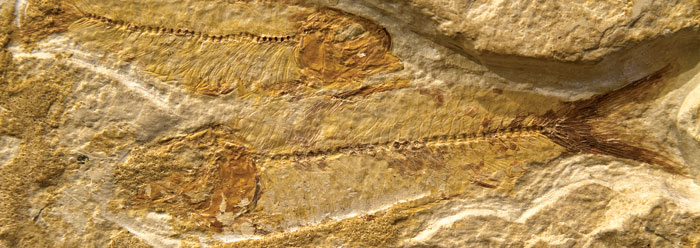A question many people have about the Flood is how did both freshwater and saltwater fish survive? Individual fish from most species will die if placed in a wrong environment. If such a flood took place, its waters would have been a mixture of salt water, fresh water, and brines spewing out from the "fountains of the great deep" (Genesis 7:11). Fish obviously survived…but how?
To make matters worse for fish, the Flood certainly involved tectonically induced tsunamis (sometimes called tidal waves)…incredibly energetic shock waves in the ocean that traveled at great speeds and pummeled the land with towering walls of water. Fish are very sensitive to shock. Likewise, the Flood involved underwater mudflows, which even today are known to flow at up to 100 miles per hour, following an underwater earthquake or other disturbance. Wouldn’t the fish have choked in the sediment-filled water?
The Flood was primarily an episode of judgment on sinful mankind and on all of his "dominion," including the earth itself, but it was also a time of God's grace and salvation. Noah and his family, and two representatives of each "kind" of land-dwelling, air-breathing animal (seven of each "clean" kind), were protected and preserved on board Noah’s Ark. Outside, "all in whose nostrils was the breath of life, of all that was in the dry land, died" (Genesis 7:22). But what about the fish and other marine creatures? Obviously, they weren’t taken on board the Ark. How could they survive, particularly both fresh and saltwater forms?
As a matter of fact, most of them didn’t survive. Over 95 percent of all fossils are marine creatures. They died and are fossilized by the trillions. Many are buried in great fossil graveyards, tightly packed together, choked with sediments, buried before they had time to decay. Obviously, they didn’t live in the environment in which they died. They were transported by rapidly moving water and then buried in sedimentary deposits. But how could any have survived?
In the complex of events and conditions that made up the Flood, certainly there were pockets of fresh water at any one time. Remember, it was raining in torrents, and we can expect that the rain water was fairly fresh. Many studies have shown that waters of various temperatures, chemistries, and sediment loads do not tend to mix; they tend to remain segregated in zones. It would be unlikely for any one area to retain such zones for very long during the tumult of the Flood, but on a worldwide scale, some such segregated zones would have existed at any given time.
The pre-Flood oceans were likely somewhat salty, although not as salty as now. Furthermore, we don’t know the tolerance levels of pre-Flood fish for sediment, salt, and temperature. Modern fish have a great variety of responses to different environments. Perhaps before the Flood, fish were even more adaptable.
There is also the possibility that great amounts of vegetation were dislodged from the pre-Flood continents and remained intertwined as floating mats during the Flood. Many creationists feel that the decay and abrasion of these mats are responsible for our major coal seams, but underneath these mats the turbulence of the surface waters would have been lessened. Perhaps many fish found shelter and nutrition under them, as insects may have on the mats themselves.
Even though there is much we don’t know about what went on during the Flood, we can see that there is at least a plausible answer that can be proposed to such questions. There is no reason for Christians to doubt the truth of the great Flood. Even difficult questions have answers.
* Dr. Morris is President of the Institute for Creation Research.
Cite this article: Morris, J. 2011. Fish in the Flood. Acts & Facts. 40 (5): 16.



















